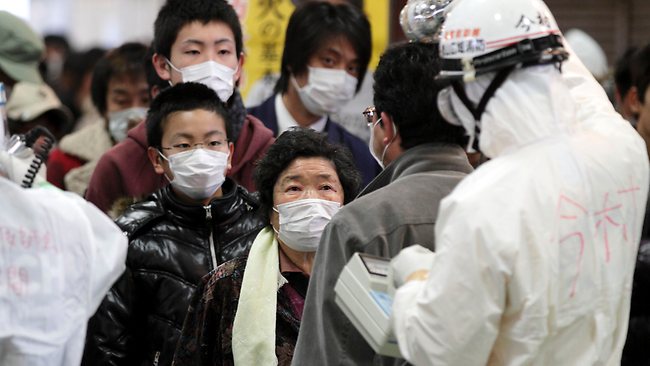Underestimate Radiation Risks

Fukushima Power Plant
EMF Protection Devices
Magnetic Field Detector
November 29,
2011
Tokyo, Japan, November 29, 2011 – Greenpeace today renewed its
demand for the Japanese government to keep its nuclear
reactors offline as simulation maps of potential accidents
at Japan’s nuclear plants - used in the development of
nuclear emergency response efforts - are completely
inadequate, and have not been updated since the Fukushima
disaster.
Following a Greenpeace freedom of information request on November
25, the Ministry of Education, Culture, Sports, Science and
Technology (MEXT) released SPEEDI simulations of the
radioactive contamination spread from all nuclear plants in
Japan (1). These maps show only extremely low releases of
radioactivity over a 10km area around the plants in the
event of meltdown, making any emergency response plan based
on them totally insufficient should another severe disaster
like the Fukushima Daiichi crisis occur (2).
The simulation of radioactive releases from the Ohi reactor for
example, is scandalously inadequate. It foresees a radiation
release in the order of 10,000 times less severe than what
could happen during a major incident (3),” said Jan Vande
Putte, Greenpeace International Nuclear Campaigner. “Similar
over-optimistic scenarios have been used for reactors all
over Japan. Hoping for the best is absolutely the wrong way
to devise an emergency response plan.
Greenpeace met with officials from MEXT and the SPEEDI programme
today, and they confirmed that the current simulations are
limited to low-level releases, and that the system needed
upgrading to cover larger releases and wider areas beyond
10km from the plants.
The
Fukushima Daiichi emergency response effort was slow,
chaotic and insufficient, and it appears the Government has
learned nothing from it so far,” said Junichi Sato,
Greenpeace Japan Executive Director. “These maps show that
there is a strong risk of reactor restarts being pushed
through without a proper, science-based assessment on the
real risks being conducted, and without proper precautions
being taken to protect the communities around the plants.
Greenpeace is demanding that the Japanese government uses SPEEDI
for what it was developed for, and run worst-case scenario
simulations for all nuclear plants in Japan so there is a
clear understand what effect a Fukushima Daiichi-type
incident at other plants around Japan could have.
http://www.emfnews.org/store
|